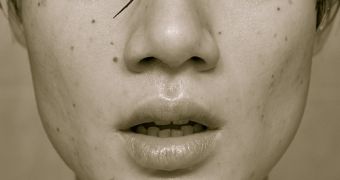Astrocytes are star-shaped brain cells that also detect the level of carbon dioxide inside the blood and regulate breathing, says new study carried out by researchers at the University of Bristol and UCL. This discovery boosts research on the brain's functions and organisation.
These cells are a category of the brain's glial cells. These last are ten times more numerous than neurones and until recently, scientists thought that they only nourished and maintained neurones together. Recent study shows that astrocytes have the ability of detecting the carbon dioxide within the blood. If the level is too high, they release a chemical called ATP (Adenosine triphosphate) that increases breathing, allowing the body to eliminate the excess CO2 and oxygenate the bloodstream.
The finding will allow further understanding of potential causes of respiratory failures, such as Sudden Infant Death Syndrome. Furthermore, we now know that astrocytes are behind the reflex of breathing.
“This research identifies brain astrocytes as previously unrecognized crucial elements of the brain circuits controlling fundamental bodily functions vital for life, such as breathing, and indicates that they are indeed the real stars of the brain,” said study leader Dr Alexander Gourine, Wellcome Trust Senior Research Fellow in the UCL Department of Neuroscience, Physiology and Pharmacology.
“This basic science information has to be used rapidly in order to determine whether glial dysfunction contributes to serious disorders of central control of breathing underlying Sudden Infant Death Syndrome and/or congenital central hypoventilation syndrome (Ondine's curse). If this hypothesis is correct astrocytes may be considered as potential targets for therapy in preventing respiratory failure,” he added.
Dr Gourine collaborated with Professor Sergey Kasparov from Bristol’s Department of Physiology and Pharmacology. The study was made on rats by using the latest gene transfer techniques. This allowed researchers to observe and also control the astrocytes' activity inside the brain through light.

 14 DAY TRIAL //
14 DAY TRIAL //